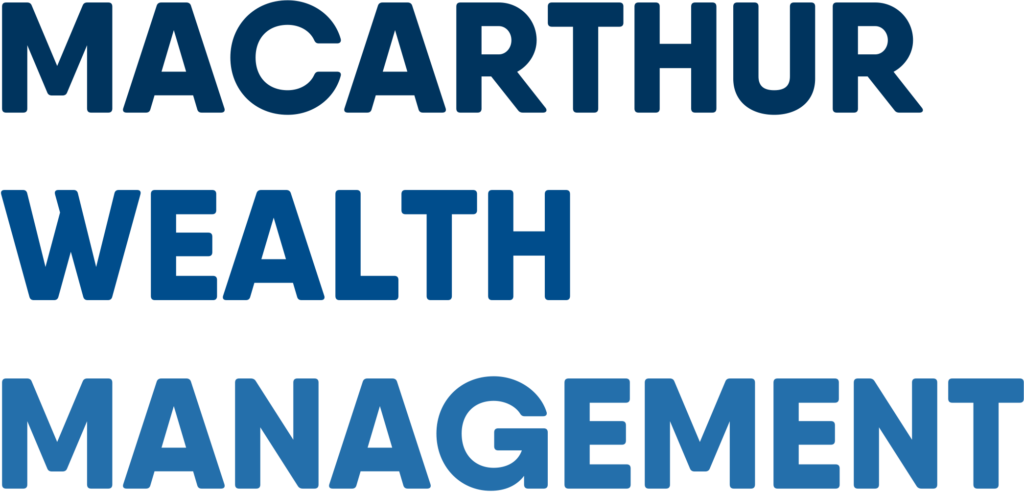(02) 9683 2869
What are the different types of superannuation funds?
Need advice? Contact Macarthur Wealth Management for expert financial advice in Parramatta and Sydney wide on (02) 9683 2869. www.macarthurwealth.com.au
There are several different types of superannuation funds. Knowing the different types of funds will make it easier for you to choose a fund that is appropriate for your purposes. Superannuation funds can be grouped into several categories. Features differ in each category.
Retail Funds
These are usually run by banks or investment companies; their general characteristic are as follows:
- Anyone can join;
- They often have a large number of investment options, sometimes in the hundreds;
- They are usually used by financial advisers who may receive a fee or commission;
- They offer both accumulation and pension fund options most Australians have their superannuation in an accumulation fund. They are called ‘accumulation’ funds because your money grows or ‘accumulates’ over time, but with the ageing population, many Australians are now using their superannuation to provide regular income payments in retirement;
- Most retail funds range from mid to high cost, but some are now offering a low cost alternative;
- The company that owns the fund aims to retain some profit.
Industry Superannuation Fund
Larger industry superannuation funds are open for anyone to join. Some others are restricted to employees in a particular industry. The main features of an industry fund are:
- They usually have a range of investment options, which will meet most people’s needs;
- They are generally low to mid cost funds although some have high fees;
- They are ‘not for profit’ funds which means all profits are put back into the fund for the benefit of all members.
Public Sector Funds
Public sector funds were created for employees of Federal and State government departments. Most are only open to government employees. The main features are:
- Some employers contribute more than the 10% minimum;
- A modest range of investment choices that will meet most people’s needs;
- Many long-term members have defined benefits, newer members are usually in an accumulation fund;
- They generally have very low fees;
- Profits are put back into the fund for the benefit of all members.
Corporate Superannuation Funds
A corporate fund is arranged by an employer, for its employees.
Some larger corporate funds are ’employer sponsored’ funds where the employer also operates the fund under a board of trustees appointed by the employer and employees.
Other corporate funds will be operated by a large retail or industry superannuation fund (especially for small and medium-sized employers).
Features of these funds include:
- Funds run by the employer, or an industry fund will return all profits to members. Corporate funds run by retail companies will retain some profits;
- If it is managed by a retail or industry fund it may offer a wide range of investment options;
- They are generally low to mid cost funds for large employers but may be high cost for small employers;
- Some older corporate funds have defined benefit members, most others are accumulation funds.
Eligible Rollover Fund
An Eligible Rollover Fund (ERF) is a holding account for lost members or inactive members with low account balances. These funds often have low investment returns and may charge high fees.
Your money is likely to grow faster if you consolidate your ERF with your active superannuation fund.
Self-Managed Superannuation Fund (SMSF)
SMSFs are essentially DIY superannuation for those that want the hands-on control with their superannuation. Of course, with added control comes added responsibility and workload.
SMSFs can be suitable for people with significant superannuation savings and skills in financial and legal matters. You must be prepared to research and track your superannuation investments regularly if you want to manage them yourself.
You can set up your own private superannuation fund and manage it yourself, but only under strict rules regulated by the Australian Taxation Office (ATO).
A SMSF can have one to four members. Each member is a trustee (or director if there is a corporate trustee).
Running your own fund is complex so think carefully before setting one up. If you set up a SMSF you must:
- Carry out the role of trustee or director, which imposes important legal duties on you;
- Use the money only to provide retirement benefits;
- Set and follow an investment strategy that ensures the fund is likely to meet your retirement needs;
- Keep comprehensive records and arrange an annual audit by an approved SMSF auditor.
If you’re running a SMSF, you will typically need:
- A large amount of money in the fund to make set up and yearly running costs worthwhile
- To budget for ongoing expenses such as professional accounting, tax, audit, legal and financial advice;
- Plenty of time and energy to manage the fund;
- Financial experience and skills so you are more likely to make sound investment decisions;
- Separate life insurance, including income protection and total and permanent disability cover.
You can pay an adviser a fee to do the administration or help with the investment decisions for your SMSF. However, you cannot pass on the responsibility of being a trustee or director.
Need advice? Contact Macarthur Wealth Management for expert financial advice in Parramatta and Sydney wide on (02) 9683 2869. www.macarthurwealth.com.au
General Advice Warning
The information provided on this website is general in nature only and does not constitute personal financial advice. The information has been prepared without taking into account your personal objectives, financial situation or needs. Before acting on any information on this website you should consider the appropriateness of the information having regard to your objectives, financial situation and needs. Before making any decision, it is important for you to consider these matters and to seek appropriate legal, tax, and other professional advice.
Disclaimer
All statements made on this website are made in good faith and we believe they are accurate and reliable. Macarthur Wealth Management does not give any warranty as to the accuracy, reliability or completeness of information that is contained in this website, except in so far as any liability under statute cannot be excluded. Macarthur Wealth Management, its directors, employees and their representatives do not accept any liability for any error or omission on this website or for any resulting loss or damage suffered by the recipient or any other person. Unless otherwise specified, copyright of information provided on this website is owned by Macarthur Wealth Management. You may not alter or modify this information in any way, including the removal of this copyright notice.
Macarthur Wealth Management Links
Blog https://www.macarthurwealth.com.au/insights/
Facebook https://www.facebook.com/macarthurwealthmanagement
Youtube https://www.youtube.com/channel/UCHde08SRVuDPchprbz0CE_g
Twitter https://twitter.com/MacarthurWealth
Pinterest https://www.pinterest.com.au/MacarthurWealth/
Linkedin https://www.linkedin.com/company/macarthur-wealth-management
Instagram https://www.instagram.com/macarthur_wealth/
Retirement: https://www.macarthurwealth.com.au/account-based-pension/


Recent Comments